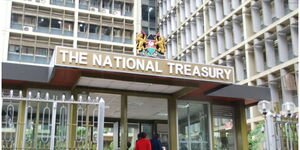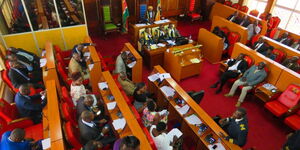The Kenya Revenue Authority (KRA) has announced plans to simplify the tax return processes, including the Pay As You Earn (PAYE) filing system.
KRA board chairperson Ndiritu Muriithi and Commissioner General Humphrey Wattanga announced the plans during a stakeholder engagement with the Nyandarua Business Community in Nyahururu Town. KRA leadership assured entrepreneurs of their continued support in streamlining tax procedures to enhance business efficiency.
Once fully implemented, the simplified PAYE return system will offer multiple filing options, including an Excel-based return and a mobile application for filling returns.
Additionally, KRA will roll out a web-based platform as well as API integration to ensure accessibility and convenience for all businesses.
API integration refers to the use of Application Programming Interfaces (APIs) to automate tax-related processes by enabling seamless communication between tax systems, businesses, and government tax agencies such as KRA.
"The complexities of PAYE returns often create administrative burdens and discourage compliance. Our aim is to simplify this process, making it more user-friendly for all employers, including Micro, Small, and Medium Enterprises (MSMEs),'' announced Commissioner General Wattanga.
Meanwhile, during the engagement, KRA also called on business communities to collaborate in ending illicit trade, particularly counterfeit brews, to create a level playing field for enterprises.
Muriithi, on his part, urged businesses to provide valuable feedback to help the Authority refine its services and improve operational efficiency.
The chairperson revealed that the authority was actively engaging stakeholders in a bid to identify the challenges they face and provide modern solutions.
"We are actively engaging stakeholders to understand their challenges and identify solutions. Our open-door policy ensures that taxpayers are heard and supported in meeting compliance requirements,” he stated.
On February 21, KRA announced other changes where it revealed plans to integrate the large and medium taxpayers—encompassing businesses and entities with substantial annual revenues—into a core functional area and the micro and small taxpayers—micro, small, and medium-sized enterprises (MSMEs), many of which operate in the informal sector—as another core functional area.
This was aimed at growing the tax base, besides offering personalised support for taxpayers.












